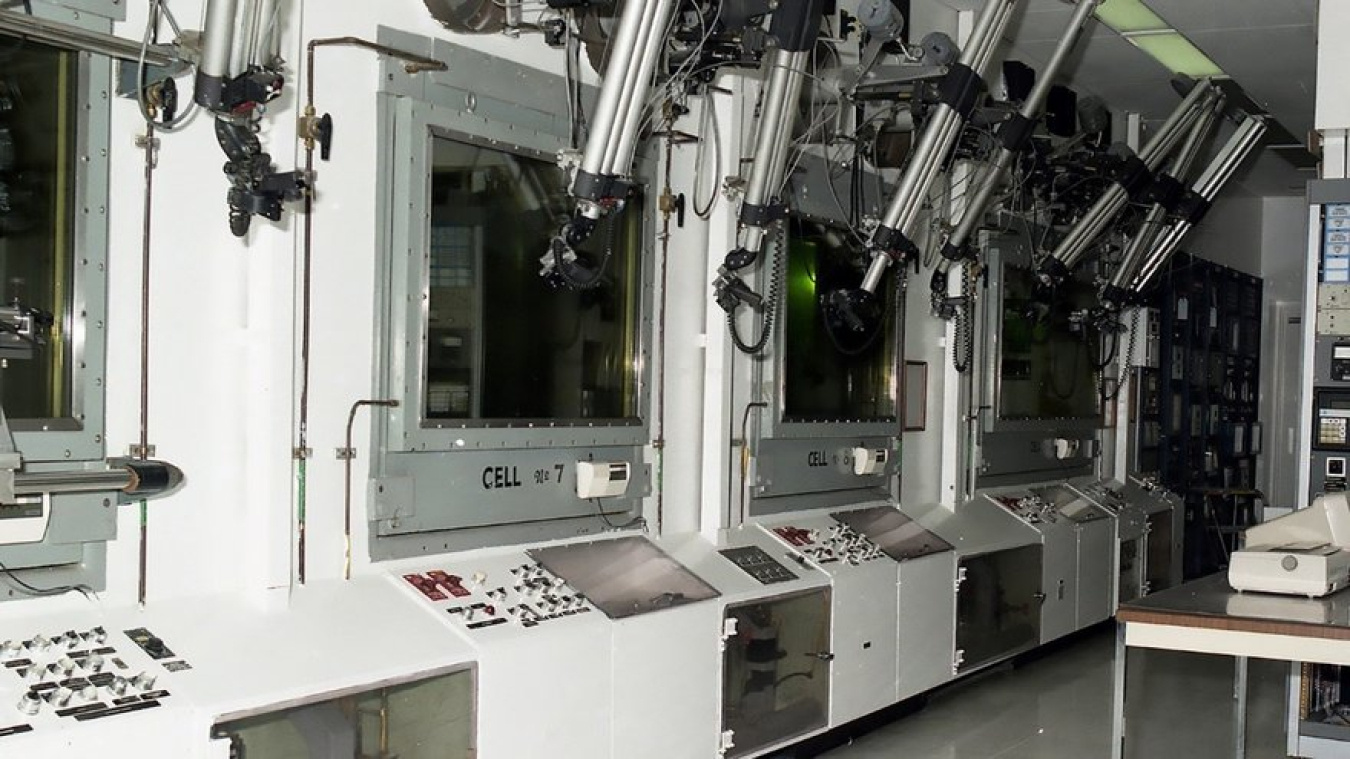
AIKEN, S.C. – Workers at the Savannah River Site (SRS) have completed risk reduction and cleanup activities in a building containing residual plutonium (Pu)-238 oxide, once used to power deep space missions.
The two-story, blast-resistant, windowless, reinforced concrete building, known as Building 235-F, has been inactive for more than 25 years. One section of Building 235-F, known as the Plutonium Fuel Form (PuFF) Facility, was used to make fuel spheres and pellets out of Pu-238 to provide heat to electrically power long-term, deep-space missions, such as Galileo, Ulysses and Cassini.
“Since late 2012, Savannah River Nuclear Solutions (SRNS) has been executing the Department of Energy’s implementation plan to reduce the hazards associated with the material at risk that remains as residual contamination in the Building 235-F facility,” said Building 235-F Project Manager Jeff Hasty. “Most of the residual contamination in the facility is within the hot cells where processing of plutonium was performed.”
In 2019, following several years of prep work, SRNS conducted risk reduction activities that included the removal of a portion of residual plutonium contamination. Measurements conducted during the removal activities indicated that the plutonium oxide, which is left behind in a manner that was expected to be easily disturbed, was harder to spread (and less of an immediate hazard to co-located workers) than previously believed. This also meant that further plutonium removal activities were not necessary.
Upon the partial removal of the residual plutonium contamination, a revised risk reduction strategy was developed to ensure the facility is safe until it can be decommissioned.
Under the risk reduction strategy, the Savannah River National Laboratory completed characterization by performing an analysis to determine the amount of residual plutonium that remained in the facility. Following characterization, SRNS, the management and operations contractor of SRS, hired an independent contractor to evaluate potential fire scenarios, specifically looking at whether a fire could occur and, if so, whether it could impact the plutonium.
Based on the reports, the SRNS project team removed or replaced ceiling tiles in rooms containing plutonium and removed combustibles identified above the ceiling tiles. Also the PuFF cells were sealed. Waste generated during plutonium removal was characterized and prepared for shipment to the SRS Solid Waste Management Facility.
With the risk reduction project completed, the project team transitioned in May 2020 to deactivating the facility. Deactivation will place the facility in a stable configuration for long-term safe storage until eventual decommissioning. The final deactivation plan is scheduled to be issued in September 2020.
